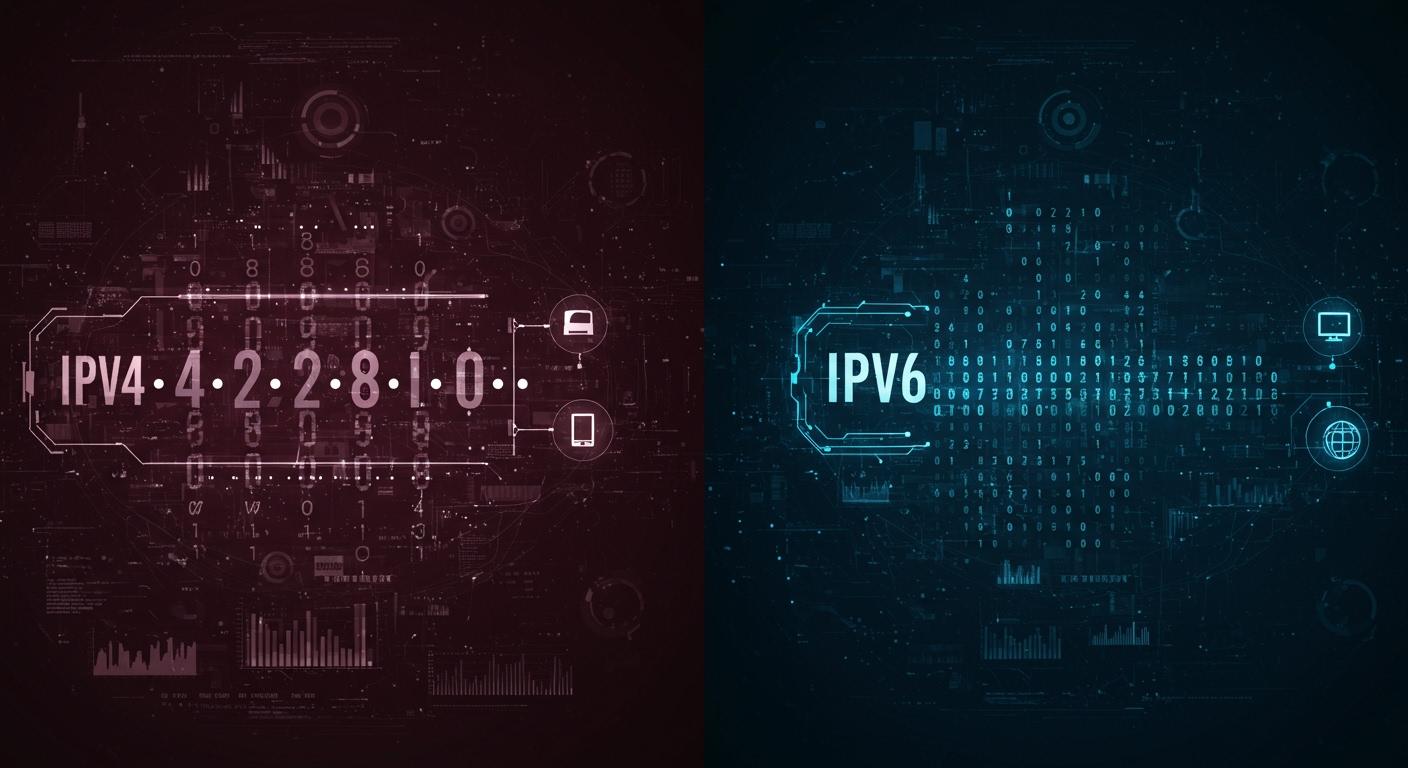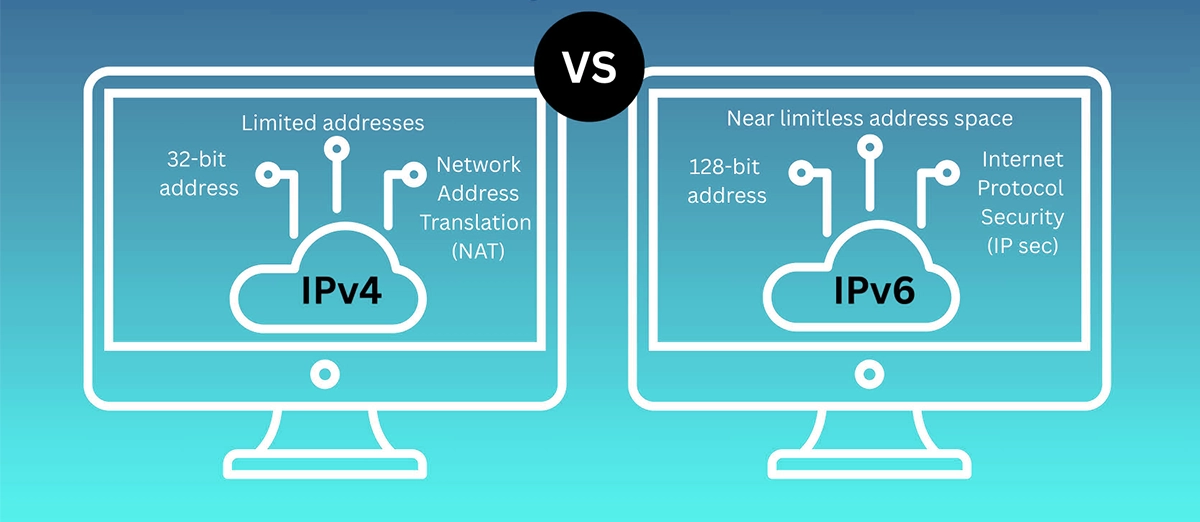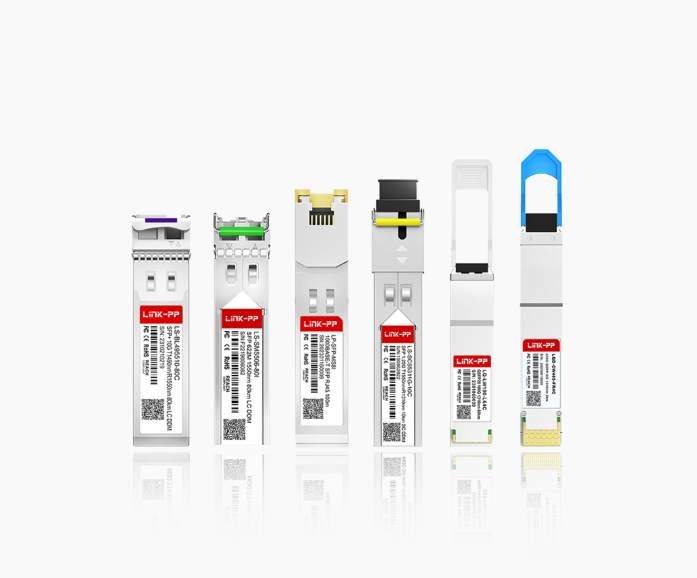
The internet is built on Internet Protocol (IP) addresses, which act as unique identifiers for devices online. For decades, IPv4 has been the backbone of this system, but with its limitations becoming glaringly obvious, IPv6 is stepping in as the successor. Whether you're a network administrator, IT professional, or simply curious about tech trends, understanding IPv4 vs IPv6 is essential. This post breaks down everything you need to know, including how innovations like LINK-PP optical modules play a role in this evolution. Let’s dive in!
⚡ Key Takeaways
IPv4 uses a 32-bit format. It has only numbers. IPv6 uses a 128-bit format. It has numbers and letters.
IPv4 can support about 4.3 billion addresses. IPv6 can support 340 undecillion addresses. This means IPv6 can grow much more in the future.
IPv4 often needs NAT. NAT lets many devices share one address. IPv6 gives each device its own address.
IPv6 has security features built in. This makes it safer than IPv4. IPv4 needs extra security steps.
IPv4 works well for small networks. IPv6 is better for big or growing networks. It helps with speed and growth.
⚡ What is IPv4?
IPv4 (Internet Protocol version 4) is the fourth iteration of the IP standard, launched in the early 1980s. It uses a 32-bit address format, allowing for about 4.3 billion unique addresses—a number that seemed vast at the time but is now exhausted due to the internet's explosive growth. IPv4 addresses are typically written in dotted-decimal notation (e.g., 192.168.1.1).
Key Characteristics of IPv4:
Address Space: Limited to approximately 4.3 billion addresses.
Configuration: Often requires manual setup or DHCP (Dynamic Host Configuration Protocol).
Security: Relies on add-ons like firewalls and VPNs; no built-in encryption.
Compatibility: Widely supported but struggles with scalability in modern IoT and mobile networks.
Despite its longevity, IPv4 faces issues like address scarcity, leading to workarounds such as NAT (Network Address Translation). However, these are temporary fixes that highlight the urgency of adopting IPv6.
⚡ What is IPv6?
IPv6 (Internet Protocol version 6) is the latest IP version, designed to replace IPv4. It uses a 128-bit address format, providing an almost limitless number of addresses—around 340 undecillion! IPv6 addresses are represented in hexadecimal notation (e.g., 2001:0db8:85a3:0000:0000:8a2e:0370:7334).
Key Advantages of IPv6:
Vast Address Space: Solves the IPv4 exhaustion problem, supporting countless devices in the era of IoT and 5G.
Auto-Configuration: Includes stateless address autoconfiguration (SLAAC) for easier setup.
Built-in Security: Incorporates IPsec (Internet Protocol Security) for end-to-end encryption.
Efficiency: Simplifies routing and reduces network overhead, improving performance.
IPv6 adoption is accelerating globally, driven by the need for scalability and enhanced features. According to Google statistics, over 40% of users now access the internet via IPv6, underscoring its growing importance.
⚡ IPv4 vs IPv6: A Detailed Comparison

To make the differences crystal clear, let’s compare IPv4 and IPv6 across critical parameters. This table summarizes the core distinctions, helping you evaluate which protocol suits your needs.
Feature | IPv4 | IPv6 |
|---|---|---|
Address Length | 32-bit | 128-bit |
Address Format | Dotted-decimal (e.g., 192.168.1.1) | Hexadecimal (e.g., 2001:db8::1) |
Address Capacity | ~4.3 billion | ~340 undecillion |
Security | Add-on required (e.g., IPSec) | Built-in IPSec |
Configuration | Manual or DHCP | Auto-configuration (SLAAC) |
Performance | Higher latency in large networks | Optimized routing, lower latency |
Adoption Rate | Widespread but declining | Growing steadily |
Use Cases | Legacy systems, small networks | IoT, cloud, 5G, and large-scale infra |
As shown, IPv6 outperforms IPv4 in scalability, security, and efficiency. For businesses, this means better support for emerging technologies and a reduced risk of address conflicts. If you’re planning a network upgrade, considering the benefits of switching to IPv6 is a smart move for long-term success.
⚡ The Role of Optical Modules in IPv6 Migration
When upgrading to IPv6, network hardware plays a crucial role in ensuring seamless transitions. Optical modules, such as transceivers, are essential components that facilitate high-speed data transmission over fiber optic networks. They convert electrical signals into light waves, enabling faster and more reliable connections—key for handling IPv6’s increased data flows.
In modern networks, LINK-PP optical modules stand out for their compatibility and performance. For example, the LINK-PP SFP28 25G transceiver is ideal for IPv6 deployments, offering high bandwidth and low latency to support advanced applications like video streaming and IoT devices. By incorporating LINK-PP products into your infrastructure, you can enhance scalability and reduce downtime during the migration process. This approach not only addresses the IPv4 address shortage solutions but also prepares your network for future demands.
⚡ How to Transition from IPv4 to IPv6
Migrating to IPv6 doesn’t have to be daunting. Here’s a step-by-step approach:
Audit Your Network: Assess current IPv4 usage and identify dependencies.
Plan for Dual-Stack Implementation: Run IPv4 and IPv6 simultaneously to ensure compatibility.
Update Hardware and Software: Invest in IPv6-ready devices, such as routers and optical modules like the LINK-PP SFP28 25G transceiver.
Test Thoroughly: Use tools like ping and traceroute to verify connectivity.
Monitor and Optimize: Continuously track performance metrics to fine-tune your setup.
For organizations, this transition supports long-term goals like leveraging advantages of IPv6 over IPv4, including improved security and scalability. If you need assistance, explore LINK-PP’s range of solutions for reliable hardware support. [Contact our IT experts ➡️]
⚡ Conclusion
IPv4 and IPv6 represent two eras of internet addressing, with IPv6 clearly leading the way toward a more connected and secure future. While IPv4 remains relevant in legacy systems, its limitations make IPv6 the smarter choice for growth-oriented networks. By understanding the differences and taking proactive steps—like integrating high-quality components such as LINK-PP optical modules—you can ensure a smooth migration and stay competitive.
⚡ FAQ
What is the main difference between IPv4 and IPv6?
The biggest difference is the address size. Internet protocol version four uses 32 bits. Internet protocol version six uses 128 bits. IPv6 can support many more devices than IPv4.
Why do we need IPv6 if IPv4 still works?
Internet protocol version four cannot handle all new devices. Internet protocol version six gives more addresses. It also has better features for today’s networks. This helps internet protocol keep up as things grow.
Does IPv6 make my internet faster than IPv4?
Internet protocol version six may give you faster speeds. IPv6 lets each device connect directly. Internet protocol version four often uses NAT. This can slow things down. IPv6 helps data move more smoothly and quickly.
Can I use both IPv4 and IPv6 at the same time?
You can use both types of internet protocol together. Many networks run both at the same time. This helps you connect to all websites and devices. It is useful during the switch to internet protocol version six.
Is IPv6 more secure than IPv4?
Internet protocol version six gives you better security. IPv6 has built-in security features. Internet protocol version four needs extra tools for safety. This makes IPv6 a safer choice for your network.




